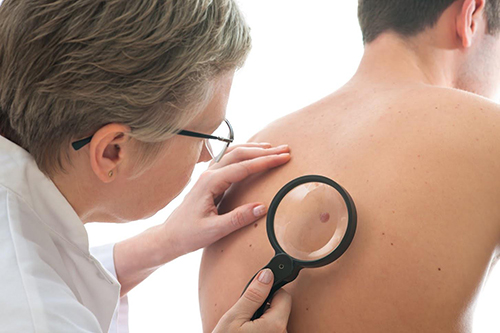What to Know About Skin Cancer Diagnosis, Recovery, and Prevention

One in five people in the United States will receive a diagnosis of skin cancer before their 70th birthday. There are more cases of skin cancer diagnosed each year than all other types of cancer combined. The risk of developing skin cancer is shared by everyone, and the rising rates over the last decade prove that everyone should understand more about skin health.
Become More Proactive
The average skin cancer patient is 63 years old, but there is no minimum age for the disease. It remains one of the most common forms of cancer suffered by people under the age of 30. Some of the causes of the disease are preventable, like sun exposure and smoking, but others like genetics and fair skin are impossible to control.
Self-check your skin every month to look for changes in moles or anything suspicious. Have someone help with skin that is impossible to see alone. Choose the same person each time, if possible, for accuracy. Have a professional screening once a year. More frequent visits may be recommended for people with multiple risk factors.
Get Treatment
A suspicious spot detected during a screening often requires a biopsy. Testing may require removal of the entire area of concern or a small sample of the tissue. A diagnosis of cancer will mean further testing is needed. These tests may include a physical exam to check for lumps in the lymph nodes, as well as blood tests, MRI scans, and more.
After the cancer stage is determined, your doctor will create a treatment plan for you. Early-stage cancer may need no other treatment than the removal of the affected tissue. Cancer that has spread to other areas of the body will require a more intensive treatment plan.
Seek Follow-Up Care
Follow-up care is needed after skin cancer removal. Checkups allow the doctor to initially evaluate the skin to make certain no cancer cells were missed during surgery. Later appointments are used to watch for any recurrence of the disease.
You may need cosmetic surgery to improve the look of the area affected if a large amount of tissue requires removal. Dermal fillers or steroid injections after the skin heals can be used to fill out any dimpled or thin areas.
Some patients may require rehabilitation services if the skin removal was extensive or if it was performed in a sensitive area like the eye. Rehabilitation and reconstruction are more likely following a recurrence of the disease.
Minimize the Scars
Many scars following surgery are not as dramatic as the patient feared. Reconstruction by the dermatologist minimizes the problem for many people. The use of lightening creams may help to fade the remaining scars, or you may be able to camouflage them using basic cosmetics.
Laser skin resurfacing and chemical peels also help to reduce the appearance of scars or may even remove them completely. Discuss the safety of the treatment with your dermatologist before undergoing the process.
Prevent Future Problems
A recurrence of the cancer is a fear of every patient. There is no absolute way to prevent its return, but patients can reduce their risk. Sun avoidance is the most important step. Use sunblock, stay out of tanning beds, and choose the shade whenever possible. Perform self-screenings monthly, and visit a dermatologist annually.
Any cancer diagnosis is frightening. The reality is that 99 percent of skin cancer patients reach the five-year survival rate when there is an early diagnosis. Daily use of sunblock can reduce the risk of developing the disease by 50 percent. Schedule a skin screening appointment today with East Carolina Dermatology and Skin Surgery, PLLC.
